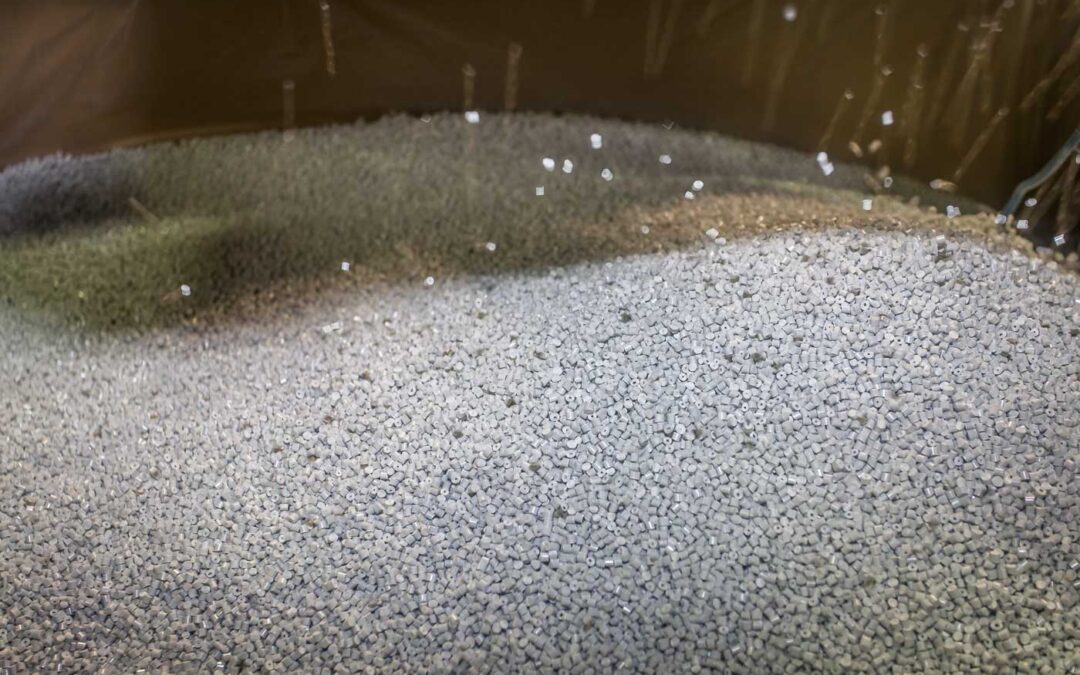The world of polymer resins is a vast and sometimes confusing subject. But it’s our world, and today, we’ll do our best to explain and convey a basic understanding of what polymer resins are and how we use them.
What Are Polymers?
Did you know that polymers surround you in your everyday life? Before we can understand what polymer resins are, we’ll begin by explaining what polymers are.
Polymers are large molecules made up of smaller, repeating units called monomers. These monomers link together in a chain-like structure, often creating complex three-dimensional networks.
That’s the dry part (clearly).
The more interesting part comes when we understand that polymers are a critical component in many of our daily materials. Polymers can come as elasticity of rubber or rigidity in plastic.
Where do we find examples of polymer use?
Household products: Furniture, toys, carpet, and even electronic devices contain instances of polymers. Clothing, in particular, uses synthetic fabrics often derived from polymers.
Packaging: In a world where our shopping drops at our doorsteps, examples of polymer use are found in diverse packaging types. And yes, we often find polymers in that fun bubbly wrap our kids (and us) really love.
Automobiles: Polymers are found in seatbelts, fuel tanks, airbags, tires, and other automobile parts.
Construction: Polymers are used in building materials like pipes, insulation, flooring, roofing, windows, and doors.
Medical: We often find polymer use in medical, surgical equipment. Polymers can help make sterilization processes more efficient.
There’s more, but to get on with our subject, we’ll stop there and pick back up with engineering resins use cases later.
So, What Are Resins?
We understand at a basic level what a polymer is and where we find it in our everyday lives. Now, let’s add in resins.
Resins can harden permanently, making them a vital component in creating a range of materials. These can be either natural or synthetic.
With natural, think plants. With synthetic, think chemical processing.
There are three broad categories for polymer resins:
Thermoplastic Resins: These resins can be repeatedly heated and cooled without harming their properties. Heating softens the resins, allowing shaping. Cooling hardens them into a shape.
This process can be repeated, making these resins recyclable. Examples include Polyethylene (PE), Polyvinyl Chloride (PVC), and Polystyrene (PS).
Thermosetting Resins: Unlike thermoplastic resins, thermosetting resins undergo a chemical reaction when heated, that results in a permanent hardening. You can’t reverse this process. These resins are used in materials that require higher levels of durability.
Elastomers: These are a particular polymer resin type that demonstrates high elasticity. These can be stretched, but they’ll return to their original shapes when released. Think rubber as a use case for elastomers. If you’re interested in further reading, research the various methods for producing powdered rubber.
Because of their diverse properties, polymer resins have a wide range of applications. They are used extensively in manufacturing, packaging, automotive, construction, and healthcare industries.
So, Is a Resin a Polymer?
Yes, a resin in indeed a type of polymer. When we delve into the deep, complex world of materials, polymers are large molecules making up repeating structural unites that connect by covalent chemical bonds. Resins are a subset of polymers. Resins are viscous substances derived from both synthetic and natural sources. Syntehtic resins are man-made polymers at the end of the day.
Synthetic resins are often found in industrial and commercial applications, including materials such as polycarbonate (PC), acrylonitrile butadiene styrene (ABS), acrylonitrile styrene acrylate (ASA), and more.
Engineering Resins: The Main Course
Of course, we’d be remiss not to discuss thermoplastic polymers, more widely known as engineering resins. Because, of course, that’s our expertise. And there are many benefits to engineering resins.
Polymer resins are the broader, more high-level term, while engineering resins describe a more specific type.
Engineering resins refer to a specific group of thermoplastic polymers that exhibit superior mechanical and thermal properties compared to more common commodity plastics. These resins are commonly used in engineering applications due to their strength, temperature resistance, durability, and other unique properties.
Engineering Resin Uses
These are only a few examples of engineering resin use cases.
Industrial Equipment: Often used in bearings, gears, and other critical/moving parts found in industrial machinery. They help reduce friction and add stiffness.
Aerospace: PEEK is used in aerospace applications due to its low weight and high strength-to-weight ratio. It’s often found in aircraft interior components and cable insulation applications.

image credit: pixabay
Automotive Industry and Engineering Resins
We touched on polymer resins used in the automotive industry at a higher level earlier. Engineering resins are used in automobiles, polyamides, or nylons, and are used in under-the-hood applications due to their ability to withstand high temperatures and harsh chemicals. Engineering resins are also used in components like radiator end tanks, air intake manifolds, and engine covers.
Engineering thermoplastics are becoming widely used in the electric vehicle revolution. This is occurring in both vehicles partially and fully leveraging the power of electricity, including in batteries and components. Using engineering thermoplastics in the EV market is significantly enhancing overall production.
ABS PC blends are widely used in engineering applications due to their balanced mechanical properties. They possess toughness and heat resistance which are both typically essential in engineering projects.
As mentioned, there are a plethora of expansive engineering resin use cases; we’ve only highlighted a few.
Construction Industry and Polymer Resins
Polymer resin uses have helped evolve the way we build things. From the early stages of a construction project through the very last details, using polymer resins provides thoroughly strong and durable builds. Polymer resin applications continue to help evolve construction projects at the highest, and of course, tallest, levels. Whether its innovation or safety, its influence is widespread.
Modified polymer resins often serve as binders in polymer concretes. Isophthalic polyester polymer concrete offers rapid hardening and acid resistance. Epoxy polymers are used more and more in the repair and retrofitting of concrete structures. PC/ABS offers a load capacity that helps construct gear mechanisms. The list of uses are truly endless in modern construction.
Polymer Suppliers and Why We’re Critical
Without polymer suppliers, the distribution of polymers, as well as quality control checks, would be a chaotic experience.
Polymer suppliers produce and distribute polymer materials, including raw polymers, polymer resins, additives, and other products. They play a crucial role in the supply chain of various industries, from plastics and rubber manufacturing to construction, automotive, medical devices, and more.
We hope our simple guide helped level-set a not only complex subject, but an extraordinary and revolutionary industry.
Got questions? We’re always happy to answer them. Contact us at info@prlresins.com or learn more about Polymer Resources here.

